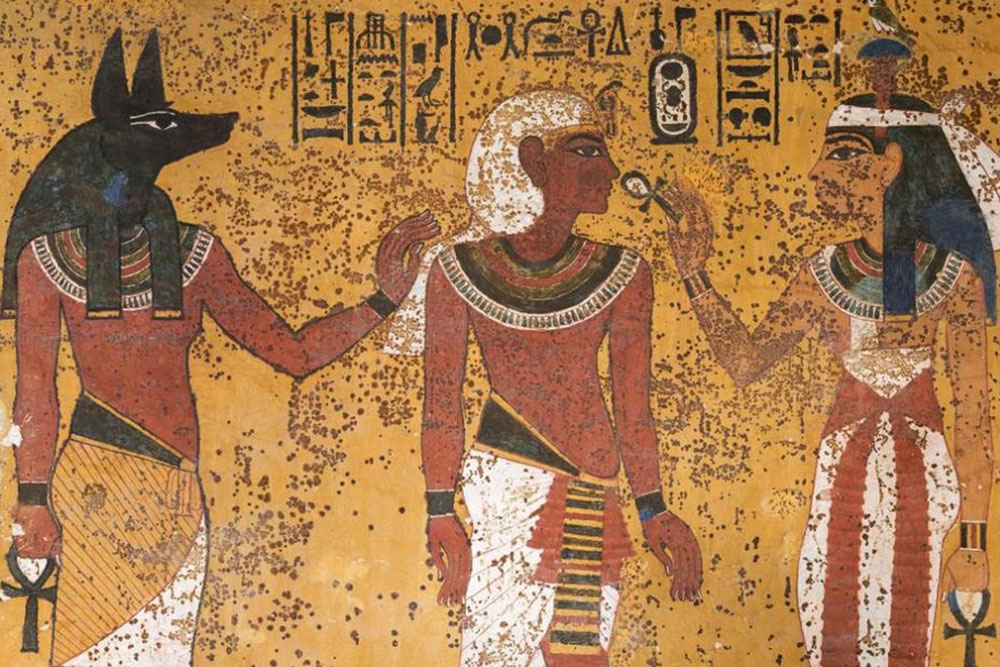The earliest remains at the underground site of the Hal Saflieni Hypogeum on the island of Malta date back to about 4,000 BCE and the complex was used over a span of many centuries, up to c. 2500 BCE. The most incredible feature of this Neolithic temple complex pertains its impressive acoustic properties. Some researchers have noted how the sound in for instance the Oracle Chamber (E’) resonates at a frequency of 111 hertz, which is called the ‘Holy Frequency.’ There are several ancient-made temples and holy structures with a similar effect and frequency. The walls and ceilings of the compartments of the Hypogeum relating to these special acoustic properties (E’, F’) are richly decorated with spirals of red ochre, the prehistoric symbol of low frequency sound resonance. It is estimated that the underground temple keeps the remains of more than 6,000 people, all stacked in a bizarre manner along the entrance way, which raises the question whether we are dealing with a 6,000-year-old ceremonial temple or a burial tomb. It could also have been used as a tomb in a much later period by another civilisation.
However, the most obvious is that the temple was initially used for ritual sound ceremonies. It is even said that the original builders were people of an unknown race with elongated skulls, which could indicate a human race with a greater sensitivity to low-frequency sound because of a deviating or larger part of the middle and inner ear inside the skull. Considering the incredible sound resonance aspect and the oddly, but familiar shaped three-layered design, one can only assume that the Hypogeum represents the inner human ear with all its special compartments, and in particular the spiral shaped Cochlea (F’). The temple itself has one deeper compartment called the ‘Holy of Holies’ (G’) which could also indicate one of the differences between a contemporary human skull and an ancient 6,000-year-old elongated human skull. Despite the small differences, entering this temple is equivalent to ‘entering the human ear.’ The ancients did not only leave us writings and inscriptions but they also communicated with us through sound, and still do – we only have to listen very carefully.
©Willem Witteveen
The Spiral is the prehistoric symbol for Low-Frequency Sound Resonance, based on the shape of the human Cochlea; a spiralled, hollow, conical chamber of bone, in which waves propagate from the base near the middle ear (20 kHz) to the apex (the top or centre of the spiral-20 Hz).
The Spiral is one of the oldest geometric shapes in prehistoric and ancient artwork and can be found on stones and temples all over the world among various cultures. Ancient temples in which spirals can be found are distinguished by their striking acoustics and resonance. An excellent example is the Hall Saflieni Hypogeum on Malta.
A Mesopotamian limestone elephant late Uruk/Jemdet Nasr period, circa 3400-3000 BCE, with ears carved as spirals.
Elephants produce low-frequency sounds between 1 to 20 Hz, known as infrasound, with which they communicate over distances as large as 10 kilometres and cannot be detected by a human ear.
Another fine example of the spiral shape being an expression of low-frequency sound and communication.
The Sleeping Lady of Malta is a 12,5 cm statue depicting a woman in a sleeping position, lying on a couch. Her upper body is naked; she has wide hips and wears a fringed skirt. The figurine is made of clay and coloured with red ocher. Both the figure and the base have been worked out with great attention to detail and the whole testifies to great craftsmanship. There are several hypotheses about the significance of this artefact. The most common is that the lady represents a deity linked to the funeral rites. Another is that she is the personification of death. The statue was found in the Hypogeum of Hal Saflieni in Malta and dates back to the Neolithic, the period when the megalithic temples were built – Wikipedia













